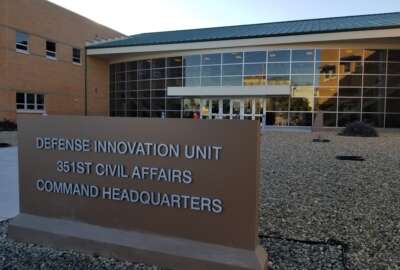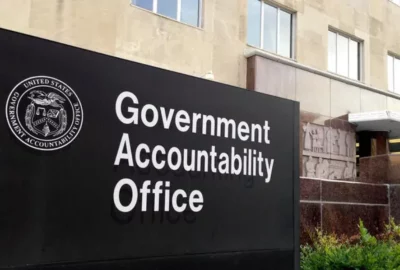The Federal Chief Information Officers Council is collecting information on dozens of examples where agencies have “world-class” IT management practices.
It’s part of an effort to more broadly share good ideas and case studies throughout the government through a Best Practices database. The CIO Council launched this effort in 2012.
The council soon will be adding 25 more examples of federal programs that not only succeeded, but beat expectations in serving citizens or saving money or proving what’s possible.
ACT-IAC awarded five programs winners in the 12th annual Excellence.gov awards, and all 25 finalists soon will be a part of that critical mass the council is creating.
“We are trying to take the good work you’ve done and figure out how do we bring that back so it’s more than just a nice day, with a nice set of awards that are given to the winners, but that we are using that knowledge base and infusing that back in to how we better ourselves across the federal government,” said Richard Spires, the CIO at the Homeland Security Department and vice chairman of the council, during a speech Tuesday at the awards ceremony in Washington. “Through the management best practices committee of the Federal CIO Council, we’re pushing hard. I view it as a pockets-of-excellence issue. We’ve got pockets of excellence throughout the federal government. We are world class. Anything you pick, you can find it in the federal government. It’s just too bad that the world class is just in these pockets. We have to figure out how we can leverage these pockets in a more meaningful way.”
USDA joins the database
Spires said the management best practices committee wants to highlight these 25 projects so others can take advantage of the work.
“We’re hoping, working with ACT-IAC, that we can harvest these projects,” he said. “So the good work you are doing hopefully has a legacy well beyond your agency, well beyond your particular project, but something that could even influence even all of federal government IT. That is certainly where we are trying to go with this.”
One such project is the Agriculture Department’s Center for Nutrition Policy and Promotion’s SuperTracker online tool. It received the top award in the Excellence in Enhancing the Customer Experience category.
SuperTracker is a free Web application that provides users with diet and activity tracking based on USDA’s dietary guidelines.
Robert Post, the associate executive director of CNPP, said in just over a year, SuperTracker has more than 2 million users, including dieticians, school teachers and parents.
“We had an experience at USDA in building resources and online tools, and we knew from getting consumers engaged in the work we do, the kinds of things that would really attract them, hold their attention and be helpful,” Post said after the Excellence.gov awards event. “Through that experience, we built a multi-tiered engagement approach that you can get on. You can tool around. You can learn about foods, their nutrient contents. You can get reports about what foods are made of in terms of their sodium level, their sugars and where you are getting your vitamins and minerals for the day. And you can get even deeper in the features and capabilities of the tool.”
Government, industry collaboration
USDA learned over the years that giving citizens the ability to compare foods in a straightforward way, and then go deeper into what they eat and how healthy they are were among the most important lessons applied to SuperTracker.
Post said CNPP surveyed and talked to health professionals, dieticians and other stakeholders about how the tool should work and what capabilities it should include.
“It’s all built on providing information around the healthy eating patterns in the dietary guidelines for Americans,” he said. “Our challenge was putting all that information in in an intuitive way. Personalization, being interactive, we needed to build the capabilities in there.”
The bureau also has enhanced the tool over the past year with new features such as letting users put in the calorie levels they want to achieve and personalize the food they eat so if they eat the same breakfast every day, it’s easy to put that information in.
CNPP worked internally and with a vendor to create the online tool.
“The knowledge base and content is derived from the fantastic folks, what we call our SuperTracker team, at the center where we’ve got these nutritionists who have a good foundation for IT to really bring nutrition into a really interactive, personalized approach,” Post said.
Other Excellence.gov award winners were:
- The Defense Manpower Data Center’s Servicemembers Civil Relief Act (SCRA) website in the Excellence in Intergovernmental Collaboration category and the 2013 Excellence.gov overall winner. DMDC worked with the departments of Justice and Treasury to create an online portal to let financial institutions, creditors and others determine if their client is a service member currently on active duty so they can be protected from foreclosures, excessive interest rates and evictions.
- National Nuclear Security Administration’s Building YOURcloud in the Excellence in Pilots and Start-up Projects category. NNSA created the first secure hybrid community infrastructure-as-a-service cloud for use by all of the Energy Department.
- IRS’ Customer Account Data Engine 2 (CADE 2) program in the Excellence in Enterprise Efficiencies category. In its third attempt to develop this improved approach to processing taxpayer returns, the IRS got it right. The IRS launched CADE 2 in January 2012 and has improved both the security and processing speeds of tax returns.
- The General Services Administration’s Drive to the Cloud 2 program in the Excellence in Digital Government category. This multi-year effort is trying to save the agency money and improve how it works. GSA launched a social media platform in the cloud as part of Phase 2 to improve collaboration internally and with external customers.
RELATED STORIES:
CIO Council to build a community for all
Food pyramid out, MyPlate in for healthy eating
In-Depth interviews: Feb. 27
Copyright
© 2024 Federal News Network. All rights reserved. This website is not intended for users located within the European Economic Area.





